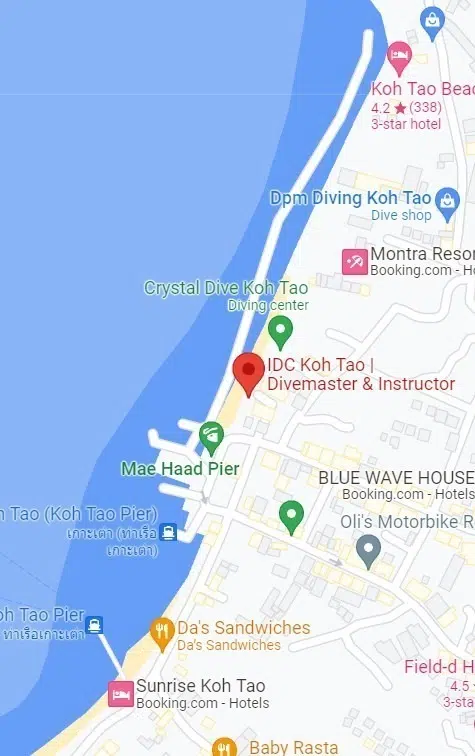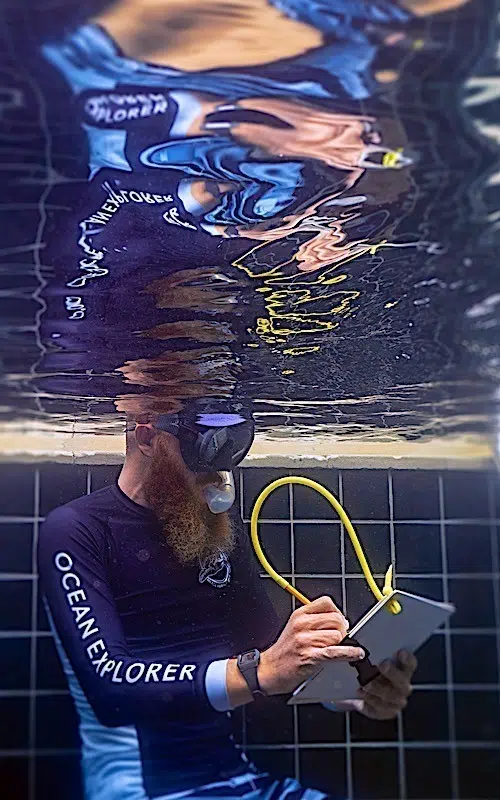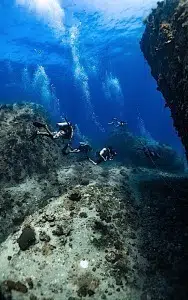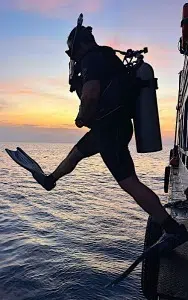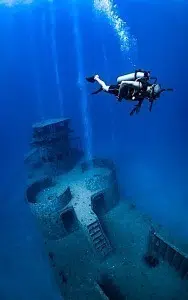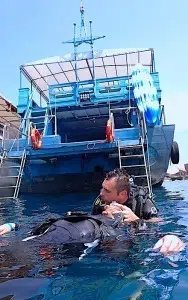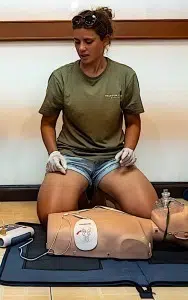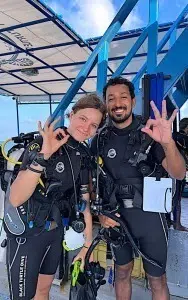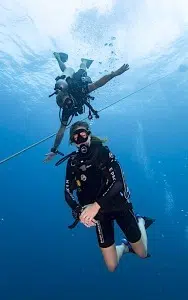Training for Diving Success within the Dive Industry
Training for Diving Success within the Dive Industry
As a PADI Course Director, I have the opportunity to work with and develop hundreds of budding dive professionals.
I feel as though I have an obligation to set each and every one of my candidates up for success within the Dive Industry.
For me, personally, this means to push them to be the best they can possibly be. This is a large part of the reason, myself and the Pro-level team I work with, decided to start conducting the majority of our Professional training, neutrally buoyant.
It’s been an idea we have been discussing as a team for quite some time and it was always something I had tried to encourage.
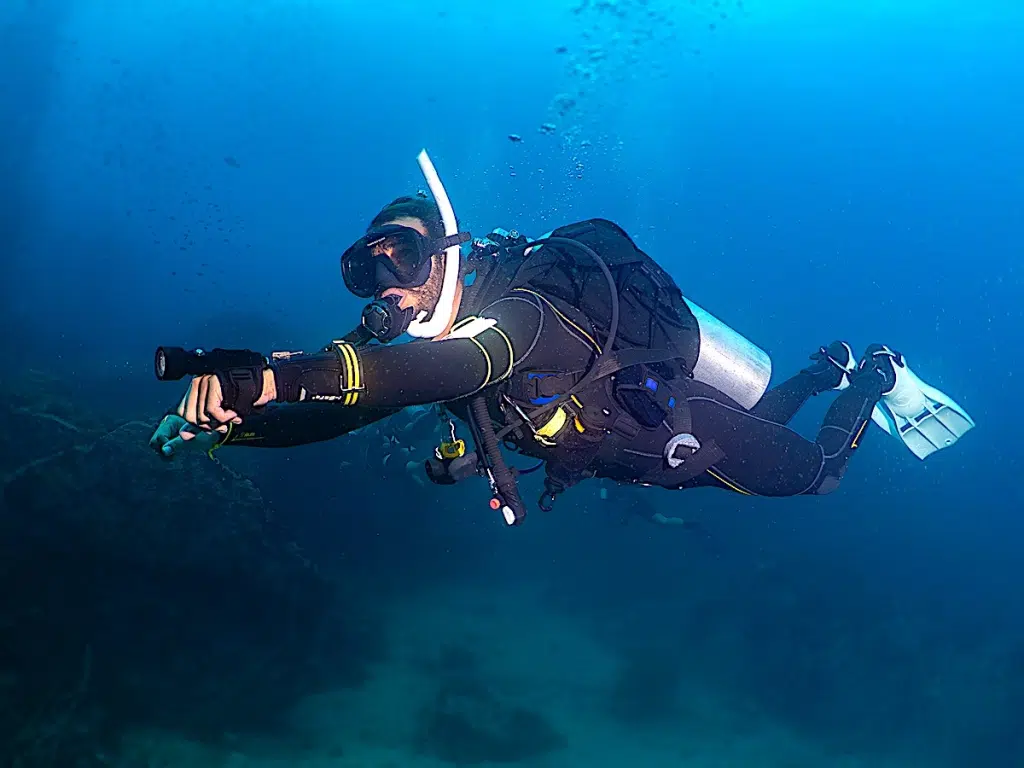
When PADI introduced the brand-new Instructor Development Program in 2019, I was very excited to see that a few of the skills on the skill circuit placed emphasis on neutral buoyancy.
I knew this was the direction I had always wanted to head in when it came to training professionals.
I had a conversation with Platinum PADI Course Matt Bolton, who I knew held similar views.
We both agreed that encouraging our dive pros to complete as much of their training mid water, would not only challenge them, but is also much more realistic from an actually diving perspective and will make them better dive professionals in the long term.
Here are a few reasons why:

Regulator Recovery Neutrally Buoyant
Neutral Buoyancy & Muscle Memory
As a former Ballet teacher, I see a lot of similarities when it comes to training dancers versus scuba divers.
I know what you must be thinking, but trust me, you would be surprised how comparable they actually are.
The biggest example of this is developing proper muscle memory. Muscle memory is all about fusing a particular motor task into memory through repetition.
While preparing for a performance, I would have my dancers practice their routine over and over again.
I had them rehearse to the maximum every single time. This was to make sure they ingrained the correct movements into their bodies.
As a diver we perform every single time we are underwater. As a dive professional it is essential that you always train properly to the maximum.
This will allow you to develop correct muscle memory and be comfortable once you are task overloaded with student divers.
As an instructor it can be extremely difficult to focus on your own personal dive skills while working with students.
You become an underwater parent and all of your focus must go towards them. This means that your body needs to know what to do without you having to think about it.
You do not want to be leading a dive and struggle with your own buoyancy control while helping students master their own.
Teaching a diving course is not the appropriate time to be working on your own skills.
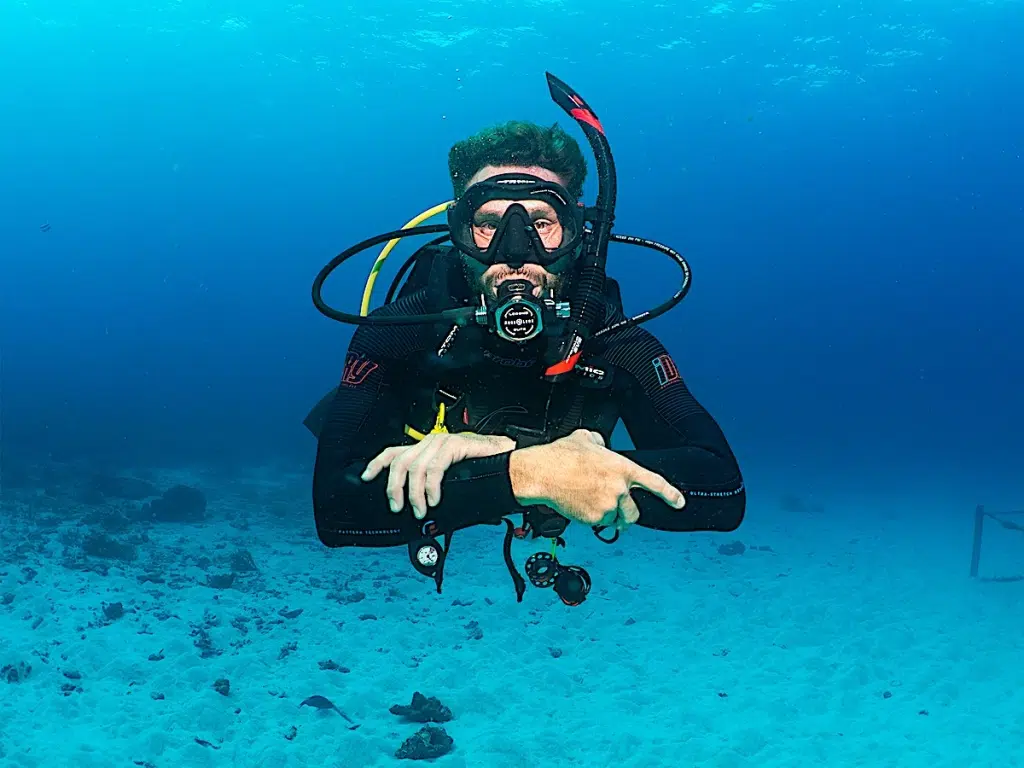
Harness the potential of neutral buoyancy from the beginning
Take advantage of your Divemaster and Dive Instructor training as this will allow you ample time to focus on developing proper neutral buoyancy muscle memory.
At Black Turtle Dive, we conduct Neutrally buoyant skill circuits in all our Professional level training courses.
This means all our PADI Divemaster candidates are only taught how to demonstrate skills in the most realistic manner possible – whilst neutrally buoyant.

Remove & Replace weight belt underwater
Thinking of becoming a PADI Instructor having completed your Divemaster training elsewhere?
Don’t despair.
Our IDC Preparation course is designed to prepare Divemaster’s that haven’t completed their skills circuits neutrally buoyant, to be able to do so.

Become a Neutral Buoyancy Role Model
It is so important, as a dive professional, to be a Buoyancy expert. During the PADI Instructor Development Course, we are constantly talking about having a positive attitude and being a role model for others.
To be a role model you must lead by example, this is also the same when it comes to your own personal dive skills and responsibility towards protecting the marine environment.
Your students will look up to you. They will try to mimic you in the water and copy your every move.
It is important that you set the bar high for yourself and as a dive professional this means excellent fundamental buoyancy skills.
Now, don’t get me wrong, this is not about being perfect. This is about striving to be the best you can possibly be.
Moving gracefully in the water takes time and you cannot expect to be picture perfect right away. That being said, the only way you will get better is by practicing every chance you get.
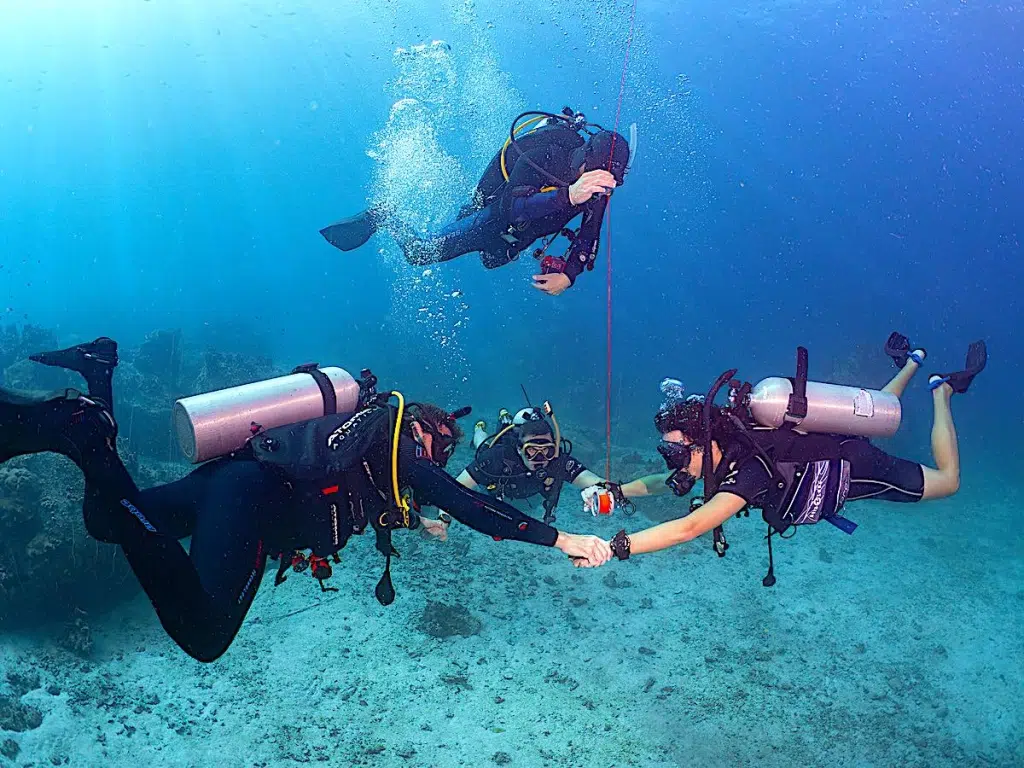
Neutral Buoyancy Workshops on Koh Tao
This is why we believe it is necessary to give our Pro-level candidates every opportunity we can, for them to fine-tune their Buoyancy skills.
We have developed our own buoyancy workshops that are designed to precede our Divemaster or IDC Prep course skill circuits in order to help our Pro level candidates with their role model buoyancy skills.
These unique workshops – Fluid Mechanics Workshops – assist our candidates in developing all the micro skills that together contribute to great buoyancy; trim, streamline, correct weighting & distribution, advanced finning propulsion techniques as well as breathing techniques.
And our neutrally buoyant Skill Circuit’s and Buoyancy Workshops give us the perfect occasion to achieve this.
For example; rather than have our Divemaster candidates practice quick disconnect LPI underwater on their knees, they can perform the skills neutrally buoyant. This will turn a simple skill into a Buoyancy clinic.

Quick disconnect LPI underwater neutrally buoyant
Neutral Buoyancy and Underwater Environments
There are some great shallow dive sites around the world that seem as though they are designed for new scuba divers.
You have minimal water movement, great visibility and an unobstructed sandy bottom that goes on for an eternity.
A dive site like this would easily allow you to position your divers on their knees in order to complete a skill.
The thing is, you may not always have a setting like this available to you. The whole idea of becoming a PADI dive instructor is to travel around the world and share your love of diving.
In this case you need to be ready to train in any type of environment and adapt to different situations.
You may not always be able to conduct a demonstration skill on your knees and you need to be prepared to handle yourself accordingly.
If you have never practiced conducting or performing a skill neutrally buoyant, you may struggle to adjust and therefore struggle to teach your course.

How to conduct mask removal and replacement in open water neutrally buoyant
Neutral Buoyancy and Continuing Education
As a dive professional, there will come a time when you start to get bored. It doesn’t matter how passionate you are when it comes to teaching, there will be a moment where you will need to spice things up.
This is usually the perfect opportunity to take a course and gain a new skill. It is always a pleasure to be the student again, especially after countless hours of training others.
The good thing is, there are lots of options for you to pursue. Just bear in mind, some of them may require more skill than others.
One avenue I see a lot of instructors wanting to explore is Sidemount Diving. Becoming a Sidemount diver introduces you to a whole new skill set and equipment configuration.
Sidemount training is an important step on the road to becoming a Tech Diver, which will then open up a whole new world of diving opportunities for you as well as help to make you a more competent diver.

Become a PADI Sidemount Diver in Thailand
The knowledge and skills you gain from your new training will also help you to grow and develop as an instructor.
Technical diving is not for everyone and it can be extremely challenging. If you do not already possess strong fundamental skills; especially when it comes to Buoyancy, you will struggle with the training but this should not discourage you.
Instead, it just highlight’s how important it is to work on yourself and your own skill set as a Diving Professional.
You never know what the future has in store for you and you don’t want to close any doors.
I would say that this is the same for cave or wreck diving. Putting yourself in an overhead environment, can be as equally exhilarating and terrifying.
If you are not able to conduct yourself mid water, you would most likely be discouraged to take part in this type of training.
Again, these types of courses are not for everyone, but as mentioned before, why close any doors as a dive professional.
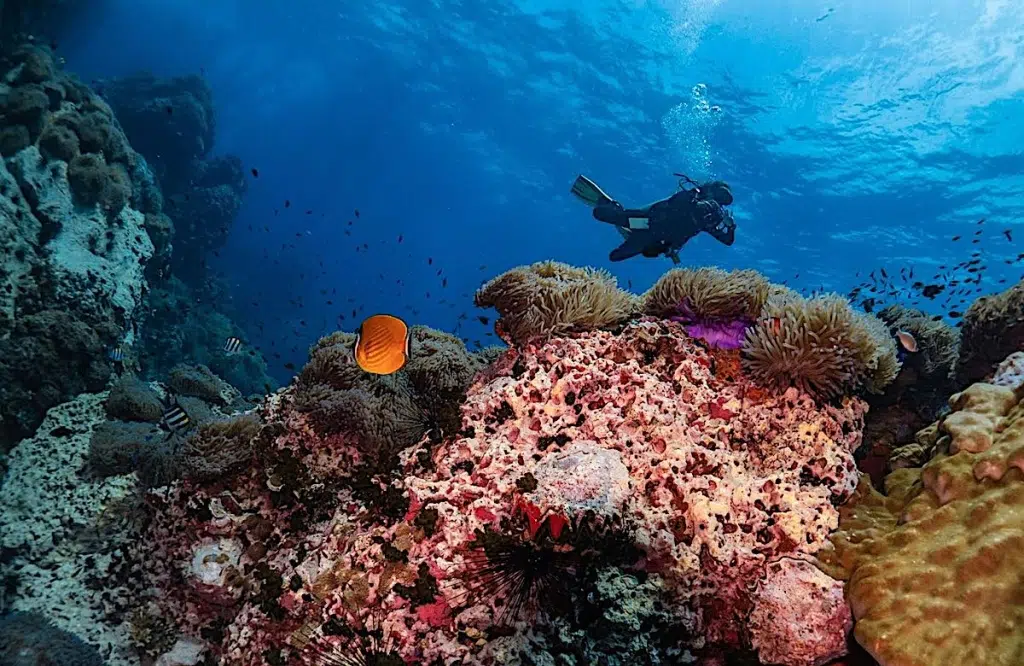
Neutral Buoyancy & Underwater Imagery
Another popular activity for dive professionals working in the scuba diving industry is underwater videography and photography. This has always been a popular choice for many of the dive professionals I have worked with.
Some want to do it as part of their diving profession, while others do it more as a hobby. You will need fantastic buoyancy control, and lots of patience when it comes to getting that great shot.
Dealing with a camera underwater is challenging enough, let alone having to focus on basic dive skills at the same time. Train correctly now and you will be able to adapt into this new style of diving seamlessly.
All in all, no matter what path you choose to explore, you want to be prepared. It is easy to feel like a buoyancy expert when you are surrounded by open water students.
However, it is important to keep on pushing and moving forward. Practice, practice, practice! It is the only way you will get better.
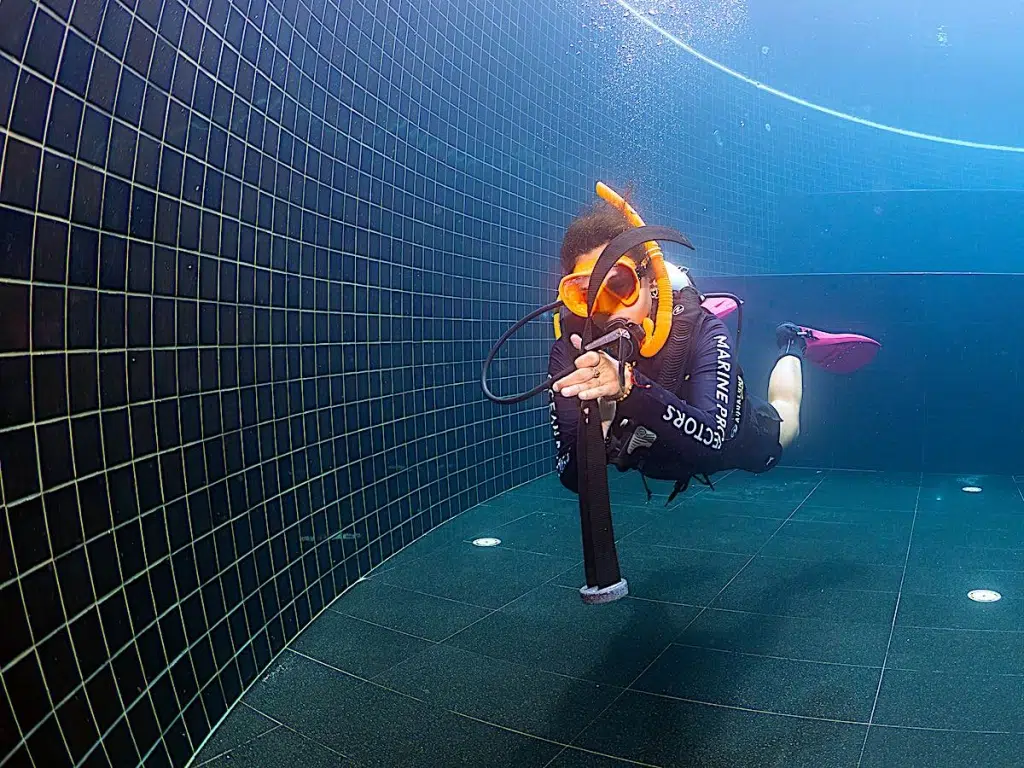
Neutral Buoyancy – No Turning Back
I’m sure you can agree with all of the points I have made; however, you must be curious to see how well it has worked out with our training so far.
We have been very successful and received nothing but positive feedback.
We fully implemented this training within our Divemaster & Instructor programs back in 2019 and ensured it was conducted in a fun and encouraging manner.
Our Divemaster candidates don’t know anything else and they flourish like birds flying the nest.
We found the majority of IDC candidates, that haven’t completed Divemaster training with us are afraid of making mistakes, and choose to play things safe to begin with.
As soon as we got over the stigma of “messing up,” or “looking silly,” they flourish, and push themselves, often improving at a much quicker rate.
So many of them agreed that it wasn’t as difficult as they thought and they never would have challenged themselves in the way that we had done.
In the end, this is exactly what we hoped to achieve.
To train more competent and well-rounded dive professionals who are ready to step out into the underwater world as more confident dive professionals and train the next generation of scuba divers.
Andrea Warren – PADI Regional Manager – Thailand East – Region 86
Former PADI Course Director @ IDC Koh Tao (2017-2022)












